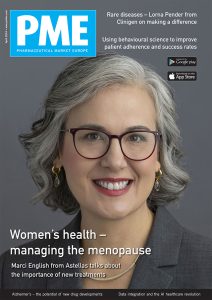How is the NHS Long-term Plan being put into action?
August 12, 2019 | NHS Long Term Plan, Primary Care Networks
Steve How, Paul Midgley and Oli Hudson, of Wilmington Healthcare, explore some of the changes that have occurred since the plan was published
Introduction
The NHS Long-term Plan was published just six months ago but many local health economies are already making significant progress on transforming services.
These developments show how key tenets of the plan – such as boosting out of hospital care; reducing pressure on emergency services; delivering population health and personalised care, and digitising aspects of primary care – will be achieved.
They are being enabled by changes in workforce and finance structure, technology and service integration – changes that pharma should be fully conversant with when brand planning.
Trusts and CCGs unite
In line with the NHS’s vision to deliver fully integrated health, community and social care services by April 2021, we have been seeing significant structural changes in some local health economies this year. For example, Croydon Health Services Trust and Croydon CCG in London recently announced that they planned to appoint a single leader for the trust and the CCG.
Trusts take over GP practices
In recent years, some trusts have become responsible for running GP practices and this method of integrating services has continued since the publication of the Long-term Plan. For example, an acute trust in the north west of England is in talks over running several GP practices in its area. St Helens and Knowsley Teaching Hospitals Trust hopes to be running five more surgeries within two years, having already taken over one practice.
Primary Care Networks
The Long-term Plan explains how expanded community multidisciplinary teams will work alongside new Primary Care Networks (PCNs), which will see neighbouring GP practices work together to serve populations of around 30,000 to 50,000 people. A total of £1.8bn of funding has been earmarked to support these place-based care systems, which are designed to help the NHS improve patient outcomes and reduce health inequalities for entire populations.
Clinical directors have already been appointed for PCNs and the networks were due to officially launch on July 1. PCNs are the basic units of place-based care and although they are based on GP practices, they involve community trusts, community pharmacists, social care and voluntary services. In Wigan, these kinds of organisations have already become so integrated that local staff are defined by where they work not by which organisation.
Emergency care
The Long-term Plan promised to continue backing hospitals that wish to separate urgent and planned care into different sites – known respectively as ‘hot’ and ‘cold’ sites– in a bid to improve surgical services. Getting It Right First Time (GIRFT) is piloting this method of working for trauma and orthopaedics in a number of hospital trusts across the country.
For example, Professor Tim Briggs, GIRFT chair, formally opened new side rooms at St Michael’s Hospital in Hayle at the start of the year. The Royal Cornwall Hospitals NHS Trust has transferred its planned in-patient orthopaedic surgery to Hayle and the changes have released capacity at the Royal Cornwall Hospital for emergency patients.
Digital enablement
The Long-term Plan promises a wide-ranging and funded programme to upgrade technology and digitally enabled care across the NHS. Among the changes is the right for all patients to access online or video consultations within the next few years. This includes the ability to switch to a digital first practice, like Babylon’s GP at Hand, which offers patients in London and surrounding areas free video consultations if they register with its practice based in Fulham.
It was recently announced that GP at Hand is poised to expand into Birmingham. This will mean that, for the first time, a London-based practice will be registering patients remotely in another city. GP at Hand will have a physical clinic in Birmingham but most of the care will be delivered digitally.
Innovation
The Long-term Plan promises “to speed up the pipeline for developing innovations in the NHS, so that proven and affordable innovations get to patients faster.” In line with this, the Government recently announced changes to the Accelerated Access Collaborative (AAC), to ensure that the most promising medicines, diagnostic tools and medical technology get through the clinical development and regulatory approval process faster.
In February, Health and Social Care Secretary Matt Hancock announced plans to create a new joint organisation for digital, data and technology, known as NHSX. The organisation, which was officially launched in July, will support digital transformation in the NHS, to help patients and staff to benefit from the latest digital systems and technology.
Conclusion
The Long-term Plan has provided further definition on the direction of travel outlined in the Five Year Forward View, ensuring implementation in local health economies in the first half of 2019. We expect change to intensify over the next 12 months, following the official launch of PCNs in July.
Ends
Steve How, Paul Midgley and Oli Hudson are part of Wilmington Healthcare’s Consulting Team. For information on Wilmington Healthcare, visit www.wilmingtonhealthcare.com
This content was provided by Wilmington Healthcare





